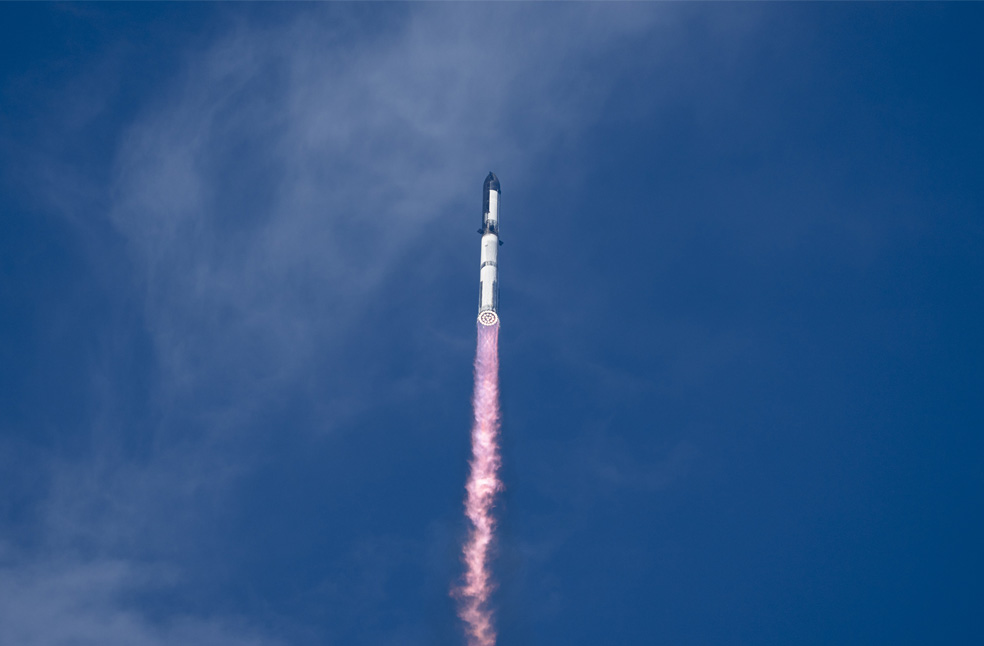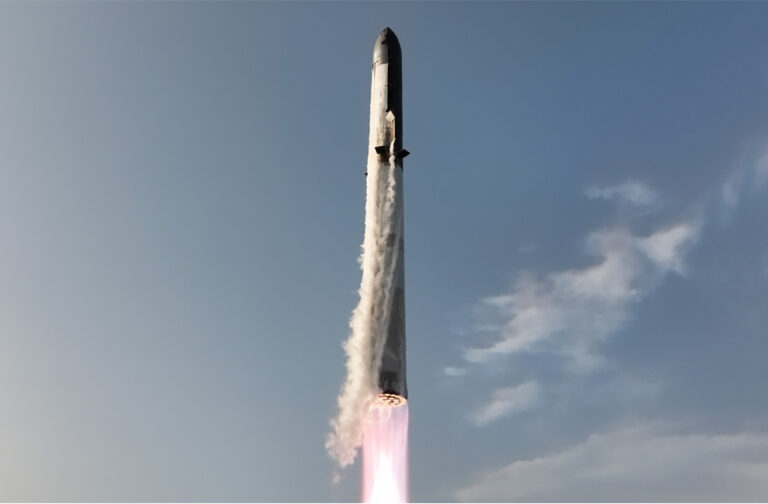Boca Chica, Texas: Another SpaceX Starship prototype disintegrated over the Indian Ocean, marking the latest turbulent test flight for the colossal rocket at the center of Elon Musk’s long-term vision to colonize Mars.
The vehicle, touted as the largest and most powerful launch system ever developed, lifted off successfully at 6:36 pm local time from SpaceX’s facility in Boca Chica, Texas, a community that recently voted to incorporate as a city under the name ‘Starbase.’
The mission’s first major issue arose when the Super Heavy first-stage booster exploded instead of executing its scheduled splashdown in the Gulf of Mexico. Following that, the upper-stage Starship encountered further complications: the doors intended to deploy a payload of Starlink satellite simulators failed to open.
— Elon Musk (@elonmusk) May 28, 2025
Despite surpassing the flight distance achieved in its previous two attempts, the prototype soon suffered from leaks and began spinning out of control as it traveled on a suborbital path. It eventually re-entered Earth’s atmosphere in an uncontrolled manner and broke apart.
SpaceX acknowledged the incident with a characteristically understated message on X, stating that, “Starship experienced a rapid unscheduled disassembly,” a common euphemism the company uses for test failures. Nevertheless, the team reaffirmed its commitment to learning from the outcome.
Elon Musk responded by vowing to accelerate testing efforts, “Launch cadence for the next three flights will be faster , approximately one every three to four weeks,” Musk posted. However, he made no comment on whether SpaceX still plans to broadcast the live-streamed Mars-focused event that had been teased ahead of this test.

The Federal Aviation Administration (FAA) had only recently granted SpaceX approval for this launch, just four days prior after concluding a mishap investigation related to the last test. Starship’s earlier test flights in January and March also ended in failure, with the vehicles exploding shortly after liftoff.
Debris from those flights scattered across parts of the Caribbean, affecting commercial air traffic in the area. In response, the FAA expanded debris hazard zones along the ascent path for launch.
Despite the risks, the spectacle attracted dozens of space enthusiasts. Crowds gathered at Isla Blanca Park on nearby South Padre Island in hopes of witnessing a milestone in aerospace history. Several small tourist boats were also spotted in the surrounding lagoon. Inside Starbase’s mission control, a live feed captured Musk watching the flight while wearing a black ‘Occupy Mars’ T-shirt.
While the flight ended in disintegration, the event marked a continued step in the iterative testing process central to SpaceX’s development model. The company remains determined to realize Musk’s ambitious interplanetary goals, despite setbacks and scrutiny from federal regulators.



